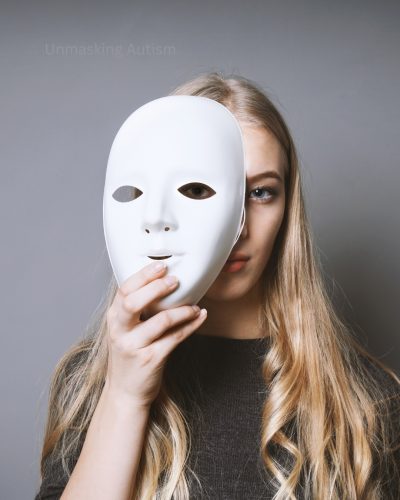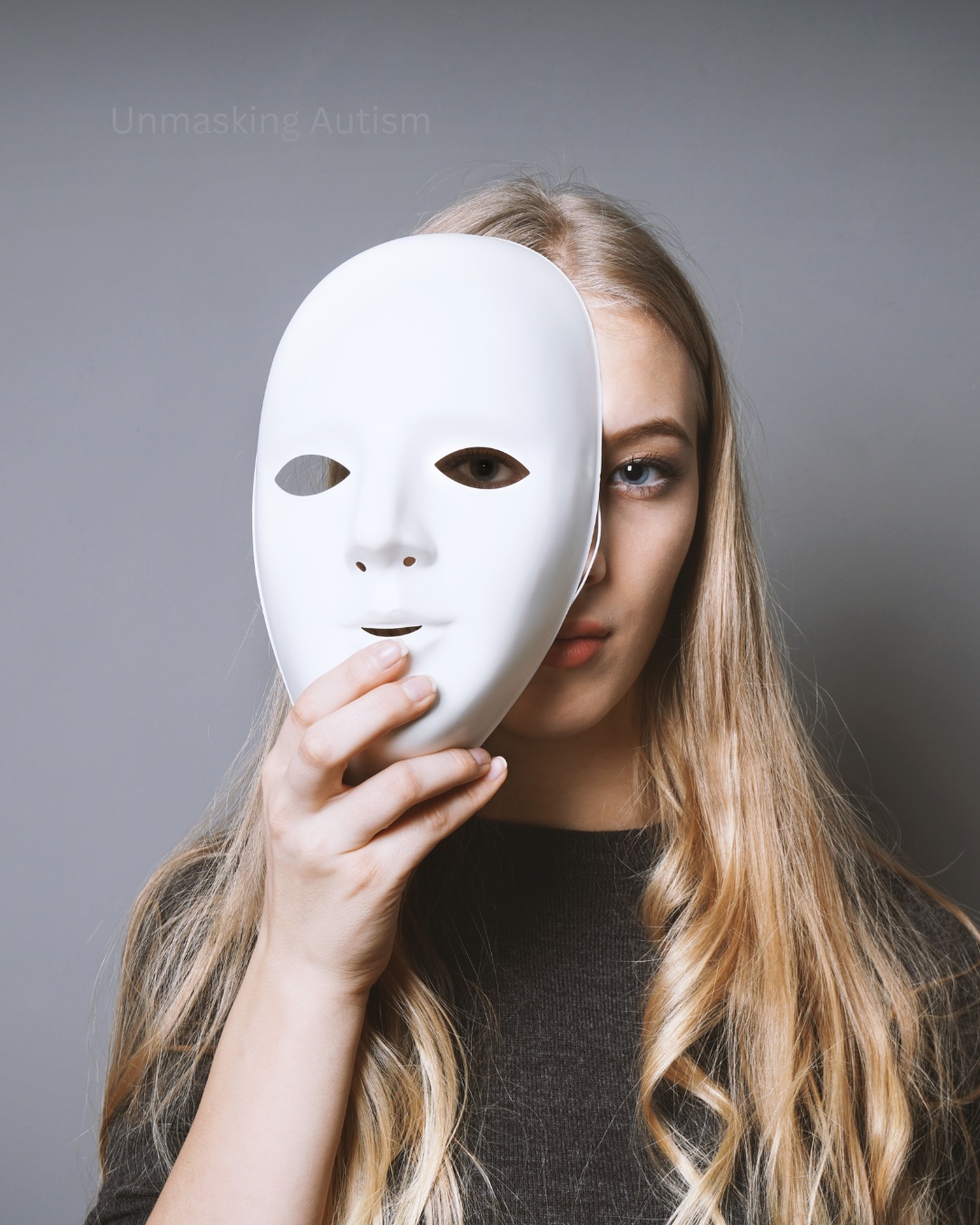Unmasking Autism by Devon Price, PhD: A Deep Dive From the Therapy Chair
Not Just About Autism—A Reflection on Creativity, Masking, and Finding Your Way Back to Yourself

Unmasking Autism – 1
I carry a certain sadness—a deep loneliness that has followed me for much of my life. Over the years, I’ve found ways to soothe it… by avoiding it. And my favorite avoidance strategy?
Striving. It allows me to keep hoping that someday, I’ll be able to escape suffering.
Of course, I know suffering is part of being human. It’s a delusion to believe I can escape it. But I guess a part of me still thinks I can. So I fall down the rabbit hole. And get out. And fall again. And so on.
Striving looks like chasing what the “experts” say will bring happiness. And honestly, some of the strategies do help. It’s just that I apply them through a perfectionist lens.
I’ve kicked addictions. I’ve recovered from an eating disorder. But this striving mindset—the one that says my worth is just one achievement away—keeps creeping back in. It’s slippery and seductive.
I have moments of reprieve. Moments when I let myself rest, be quiet, read, and enjoy the things I love. But inevitably, a kind of restlessness begins to hum beneath the surface—like a rubber band being pulled tighter and tighter—until I’m snapped back into pushing, performing, posting.
💌 P.S. If this resonates, I share reflections like this in my newsletter, Remember & Reclaim—bite-sized insights you can actually use in your life. Sign up here to get them delivered every two weeks.
Something about this book, Unmasking Autism, gave me the courage to throw that whole script out. (Okay, maybe not forever. Maybe I throw it out, then go dig it out of the trash a few times. But still—something is shifting.)
This book helped me experience what’s possible when I let go. Love what I love. Dress how I dress. Wear the earrings again. Identify as an artist and dancer.
Yes, it’s a book about Autism, but it invites us all to liberate. It celebrates the beautiful, varied ways our brains work. It offers a way out of the suffocating narrative of who we’re “supposed” to be—how we’re supposed to talk, think, move, feel.
Unmasking Autism offers permission to stop performing in order to belong.
This is a core narrative in my own book—the ways we adopt beliefs and abandon parts of ourselves to maintain love and connection in systems that don’t really see us.
Five Lessons I’m Bringing Into the Therapy Room From Unmasking Autism
1. Getting an Autism Diagnosis Can Be a Bureaucratic Maze—And a Privileged One
Diagnostic criteria were built around studies of white boys. Many people—especially women, BIPOC, and queer folks—fall through the cracks. Price reminds us: If you identify, you are. This is a reclamation.
2. Behavioral Therapy and PTSD
The gold standard for “treatment” of autism is Applied Behavioral Analysis (ABA). But according to Price, 46% of Autistic adults who had ABA therapy also report symptoms of PTSD. Price says:
“They learned to mask. To comply. To smile on command. But not how to say no. Not how to feel safe in their own skin.”
One former ABA therapist even says:
“I fear I conditioned kids to be easier to manipulate and abuse.”
I’m not proposing that there shouldn’t be services to help. But what if they were more focused on teaching how to name feelings? How do they show up in the body? And what helps move them?
Stemming? Normalize it. Then give people tools to stem even if the world won’t let them do it freely.
Masking takes a lot of energy. What if autistic (and allistic) people were free to put that energy to good use.
3. Let Them Rest in the Obsession
Passion and fixation aren’t “problems to fix”—they’re part of the Autistic rhythm of energy. Letting someone go deep into their interest creates calm.
“They may operate in spurts. Let them rest where they find joy.”
4. Communication Is a Two-Way Street
Price offers a brilliant breakdown on page 208 of how to co-create communication accommodations. As a therapist, this reframes how we talk about goals—not “improving social skills,” but creating shared understanding and consent.
For example, if I notice one of my clients is uncomfortable with eye contact, I ask if it would feel more comfortable not to maintain it. No problem. I normalize stimming. And I model finding comfort in my own body.
5. So Many Clients Have Been Socialized to “Perform” Normal
Many neurodivergent clients describe using characters from books or movies as social blueprints—practicing tone, facial expression, emotional pacing.
“They’re not being fake. They’re building survival scripts.”
And then the haunting feeling sets in: I know I’m missing something. But I don’t know what it is. That ghost of uncertainty shapes self-esteem in profound ways.
I have deep empathy for that—for what it might feel like to walk through the world and feel like I’m speaking a different language. Like everyone knows something… except me.
Some of My Favorite Quotes from Unmasking Autism
- On fidgeting/stemming and “quiet hands”:
“Some are unable to appreciate the emotional and psychological benefits of fidgeting or stimming because the importance of having ‘quiet hands’ was so deeply drilled into them.”
This quote is in the chapter on masking and sensory needs. It’s typically in the middle section, perhaps around the chapter after the one on emotional attunement.
- Neurodivergent design (p. 168):
“What would a world look like if it were built for diverse brains, instead of against them?”
For example, some stores have hours for people who are highly sensitive. They dim the lights and turn down the music. I love that!
Highly Sensitive Person or Autistic? Rethinking the Labels
This book pushed me to reconsider some of the diagnostic and cultural lines we draw between “highly sensitive” and “autistic.” Price mentions that Elaine Aron, who coined the term Highly Sensitive Person (HSP), later revealed that some of her own family members—people she initially saw as HSP—were eventually diagnosed with autism.
For years, HSP has been a more socially acceptable identity. Autism, by contrast, has often carried a gendered and inaccurate stereotype of being emotionally detached, robotic, or rigid. But Price reminds us that Autistic people can be deeply emotionally attuned—and that many folks who identify as HSP may, in fact, be Autistic or neurodivergent in ways our current system doesn’t always recognize.
Processing Everything: A Different Kind of Brain Wiring
One of the most fascinating parts of the book was Price’s explanation of how Autistic people process information. Unlike allistic (non-autistic) people, whose brains go through a process of synaptic pruning, Autistic brains often don’t undergo the same level of pruning. This means Autistic people don’t automatically filter out sensory or contextual data—they take in everything.
Price explains that this isn’t a deficit—it’s a difference. Imagine walking through a forest. An allistic person might notice the trail, the tree ahead, and the general direction they’re heading. An Autistic person might take in the moss on the bark, the shift in light, the buzz of an insect, and the texture of their socks—all at the same time. It’s not that they can’t focus; it’s that they’re focusing on all of it.
When you’re constantly processing the full weight of the environment, overstimulation makes sense. But it’s also a kind of brilliance—one the world too often overlooks or pathologizes. What would it be like to see everything? That’s why many Autistic people excel in detail-oriented work—because they notice what others miss.
Conclusion: There’s Nothing Wrong With the Way You Are—Unmasking Autism and the Permission to Belong
This book reminded me of something I often tell my clients—but sometimes forget to believe myself: there’s nothing wrong with the way you are.
Unmasking Autism helped me see how much of our suffering comes not from who we are, but from how much energy we put into trying to be someone else. Into masking. Into striving. Into editing ourselves for the sake of being understood, accepted, or safe.
And it made me wonder: What if we could stop?
What if therapy—and the world—made more space for difference instead of asking people to conform? What if the goal wasn’t to fix or improve, but to understand and support? What if the real healing came from unlearning the belief that we have to earn our belonging?
Whether you’re Autistic, questioning, or just tired of performing a version of yourself that isn’t quite true—this book offers something rare: relief. Permission. Possibility.
It reminded me that rest is allowed. Obsession is allowed. Sensitivity is allowed. You are allowed.
And maybe that’s where real belonging starts.
Want more resources for Unmasking? Here’s a few of my favorites:
- Podcast: How “unmasking” leads to freedom for autistic and other neurodivergent people
- The Unmasked Autistic
💌 Want more reflections like this?
In my newsletter, Remember & Reclaim, I unpack themes like masking, self-trust, and nervous system healing in short, digestible pieces—plus you’ll be the first to know when new content drops. Click here to join.
📚 You might also enjoy these book reflections:
-
What We Don’t Talk About When We Talk About Fat by Aubrey Gordon
- Ghostly Matters by Avery F. Gordon
-
The Fall of the House of Usher by Edgar Allen Poe





